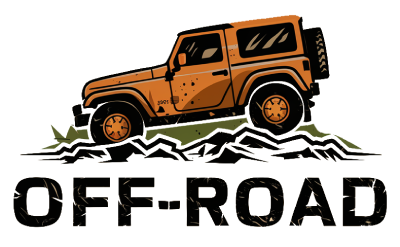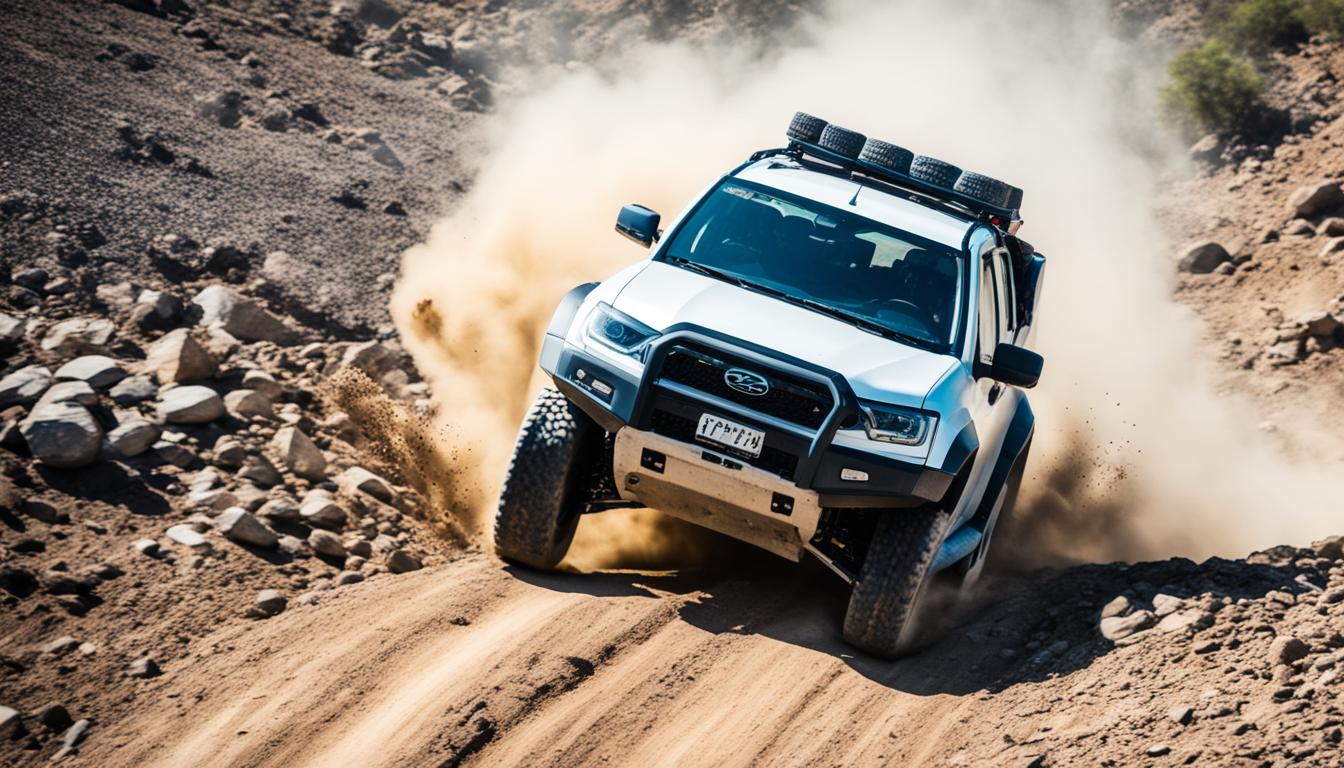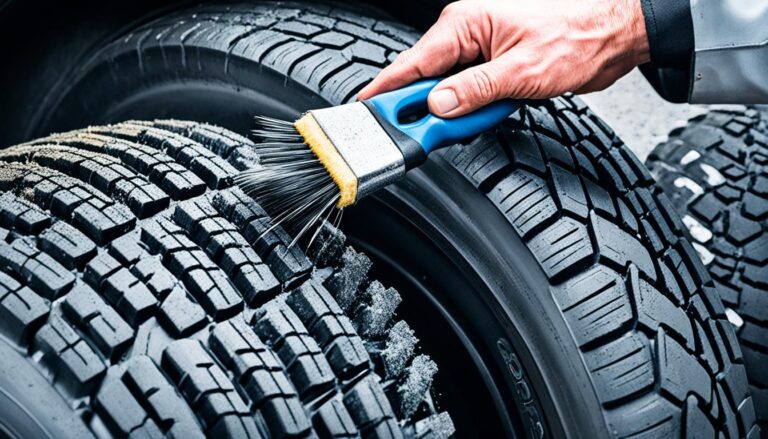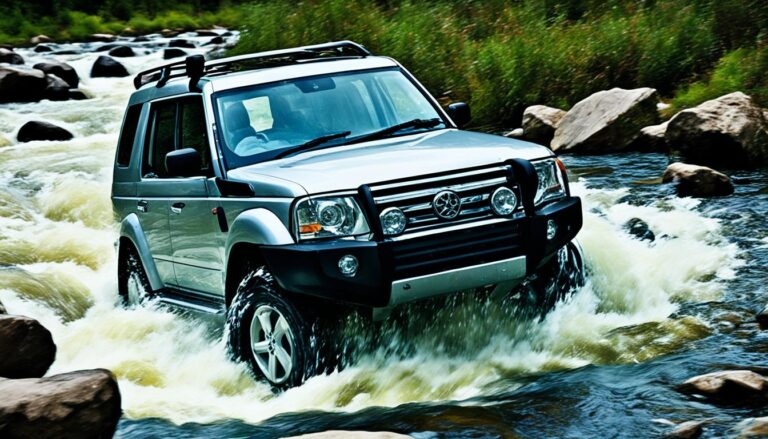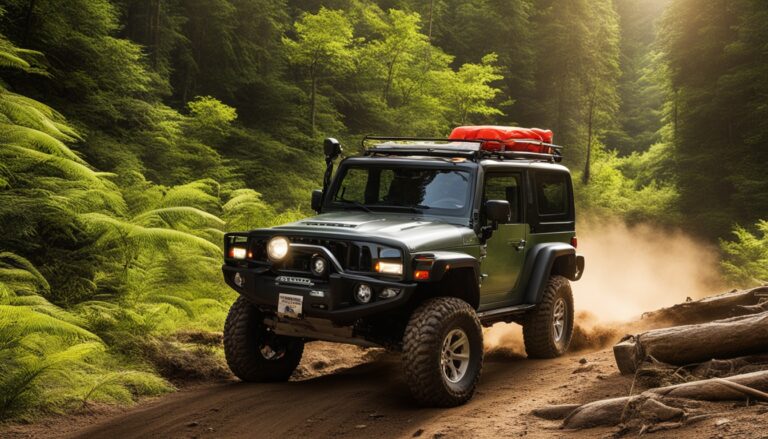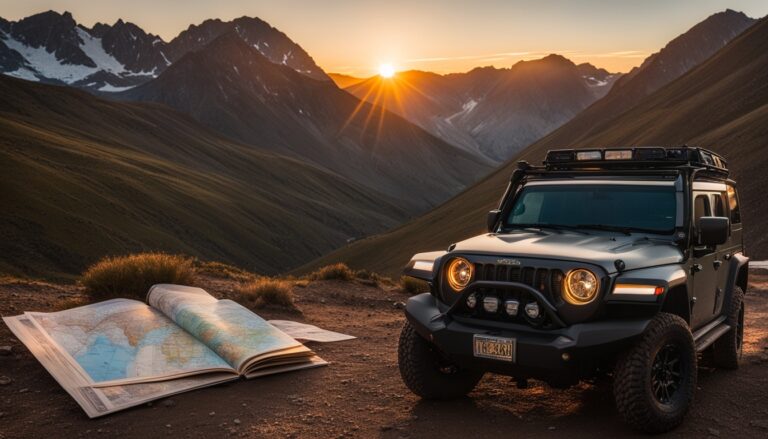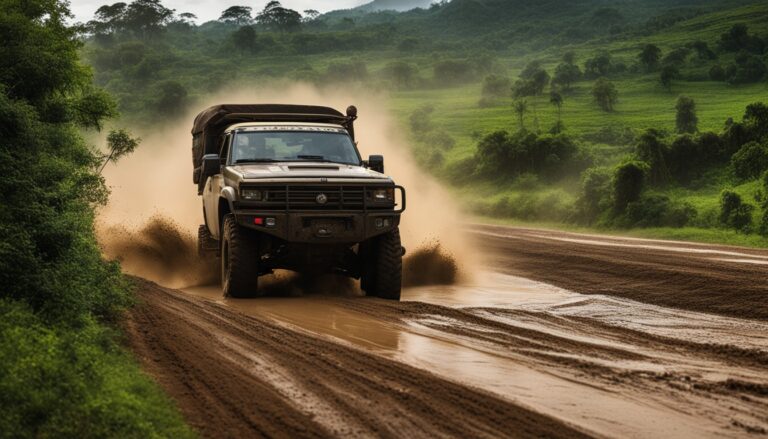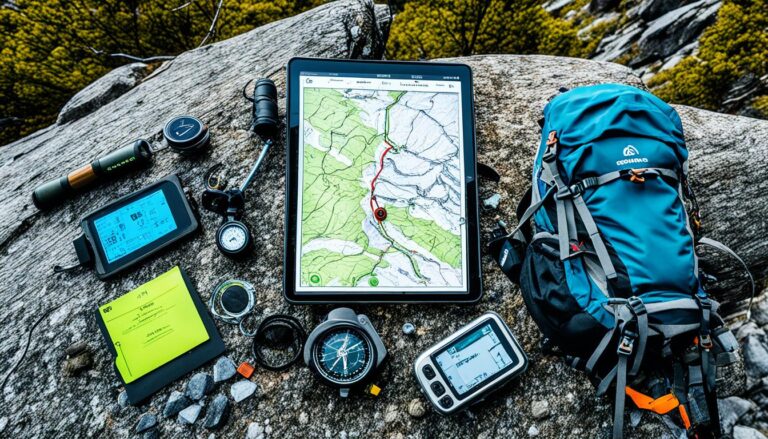How to Choose the Right Tires for Off-Road Driving
For those of us passionate about off-road driving, selecting the right tires is paramount to ensure safe and exhilarating adventures. Off-road tires are specifically engineered to handle the challenges of various terrains, such as mud, gravel, sand, and rocky surfaces. As we embark on our journeys, it’s vital to recognize the critical role that tire selection plays in influencing our vehicle’s performance, stability, and overall safety.
Choosing tires requires us to consider several factors, including terrain requirements and tire characteristics, which can profoundly impact our experience on the trails. In this section, we’ll delve into the essentials of off-road tires, examining how our choices can enhance our adventures on rugged landscapes, and guiding us toward making informed decisions for our off-road vehicles.
Understanding the Basics of Off-Road Tires
When it comes to off-road driving, tires play a crucial role in performance and safety. The off-road tire differences compared to standard road tires are significant, affecting our experience on different terrains. Key aspects like tread patterns, sidewall strength, and rubber composition help tailor tires to specific environments. This knowledge empowers us to make informed choices, ensuring we have the right tires for our adventures.
What Makes Off-Road Tires Different?
Off-road tires are designed with unique features that set them apart from regular tires. These differences include:
- Tread patterns that enhance traction on loose surfaces
- Reinforced sidewalls for protection against punctures
- Flexible rubber compounds that improve grip in various conditions
These elements work together, allowing us to navigate challenging terrains with confidence. For instance, mud tires boast deep treads specifically engineered to provide optimal grip in slippery and loose soil, while all-terrain tires strike a balance, catering to versatility across mixed surfaces.
Types of Terrain and Their Tire Requirements
Each type of terrain imposes distinct demands on our tires. Understanding these terrain tire requirements is essential for selecting the right ones. Here’s a breakdown of various terrains and the corresponding tire types:
| Terrain Type | Recommended Tire Type | Key Features |
|---|---|---|
| Muddy Trails | Mud Tires | Deep treads, superior grip |
| Rocky Paths | Rock Crawling Tires | Thick sidewalls, aggressive tread |
| Mixed Surface | All-Terrain Tires | Versatile tread patterns, balanced performance |
With the right tire choice tailored to our driving environment, we can enhance both our vehicle’s performance and our off-road experience.
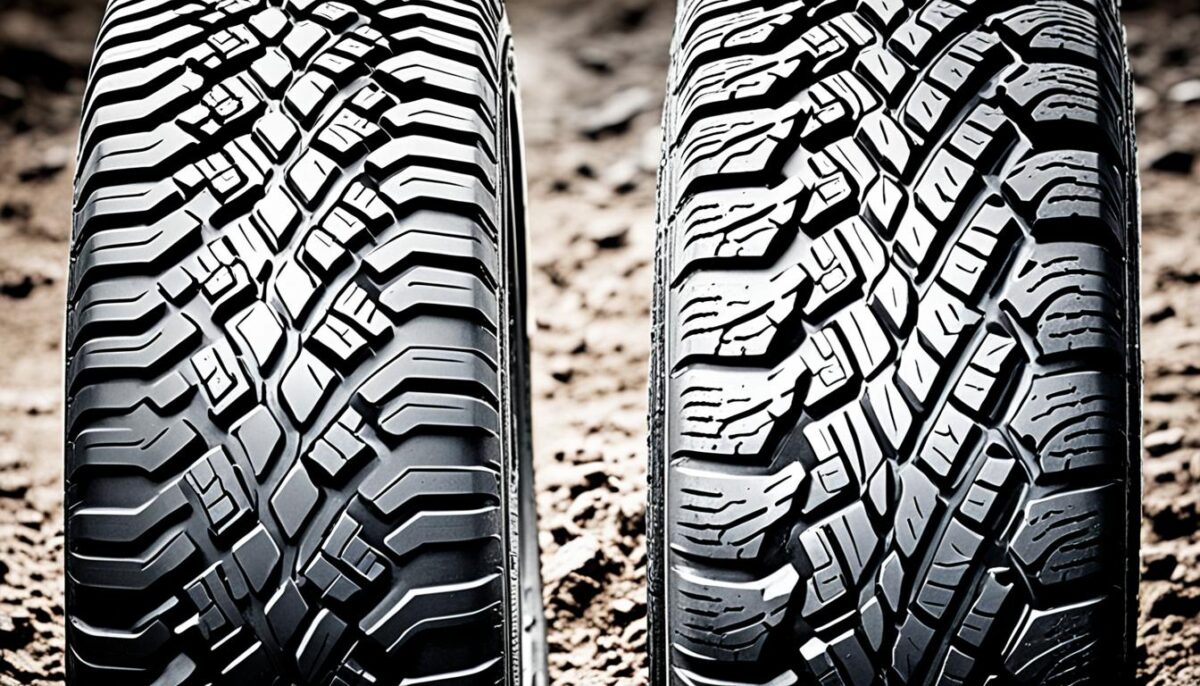
Tire Selection for Your Off-Road Vehicle
Choosing the right tires is crucial for optimizing the performance of our off-road vehicles. Understanding how to match the tire characteristics with the vehicle type helps in enhancing our driving experience. Each vehicle carries its own weight and design specifications, which significantly influence our selection process.
Matching Tire Characteristics with Vehicle Type
The attributes of vehicle type tires should align with the specific needs of our off-road vehicle. For instance, heavier trucks require robust tires to handle the demands of rugged terrain. We must consider various factors such as:
- Vehicle weight and size
- Intended use, such as rock crawling or mud bogging
- Performance needs, including traction and durability
This careful evaluation ensures we are matching tires with vehicle effectively, maximizing performance when navigating challenging environments.
Choosing Between Bias Ply and Radial Tires
When selecting off-road tires, understanding the differences between bias ply tires and radial tires becomes essential. Each type holds distinct advantages and disadvantages:
| Tire Type | Advantages | Disadvantages |
|---|---|---|
| Bias Ply Tires |
|
|
| Radial Tires |
|
|
By weighing our options between bias ply and radial tires, we can make an informed decision that aligns with our off-road vehicle selection. Understanding these differences enhances our overall experience and ensures we choose the best tires for our adventure.
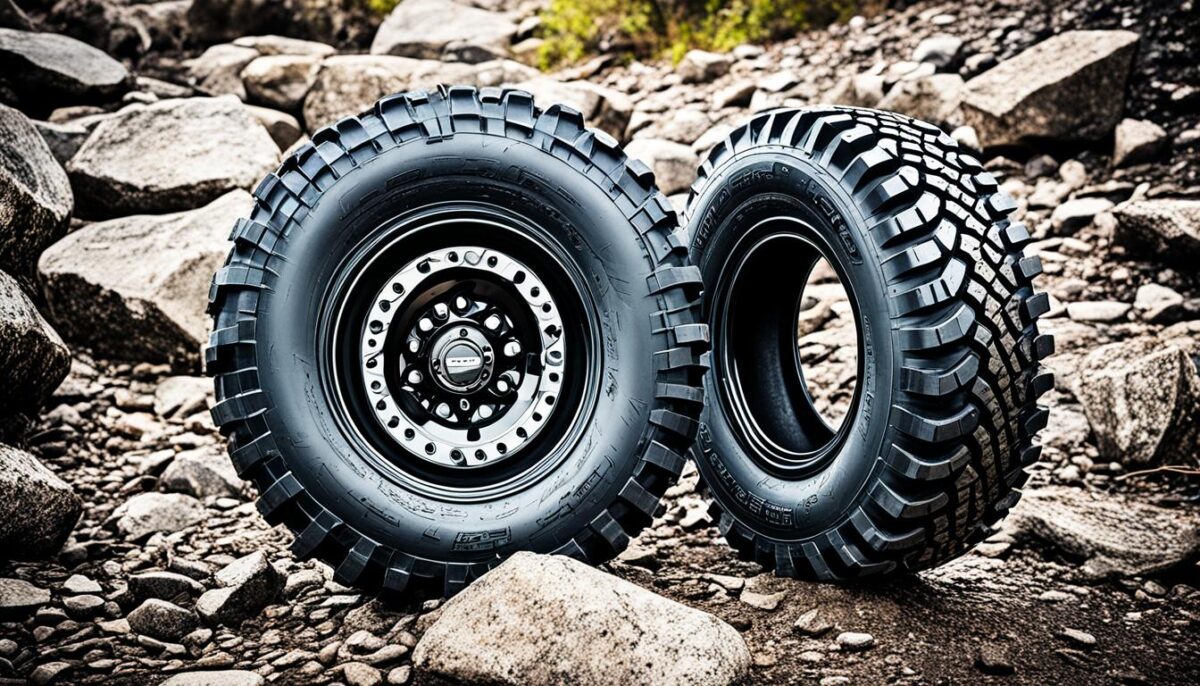
Evaluating Tire Performance Features
When it comes to off-road driving, understanding tire performance features can significantly enhance our experience. Key aspects such as tire traction and tread design play vital roles in ensuring our vehicles can navigate various terrains effectively. By selecting the right characteristics for our tires, we set ourselves up for successful off-road adventures.
Traction and Tread Design Explained
Tire traction is crucial for safe and optimal performance on uneven surfaces. An aggressive tread design helps to maintain grip by channeling mud, rocks, and snow away from the tire. For example, tires with deeper and more pronounced patterns can provide improved traction on challenging terrains like hills or slippery trails. Some common tread designs include:
- All-Terrain – Versatile for a mix of on-road and off-road conditions.
- Mud Terrain – Engineered for maximum grip in muddy and loose conditions.
- Rock Terrain – Features reinforced sidewalls to withstand sharp surfaces.
Choosing the right tread design not only enhances traction but also boosts overall off-road handling. Our choice directly impacts how well our vehicle can perform in unpredictable environments.
How Load Rating Affects Your Off-Road Experience
The load rating of a tire provides essential information about how much weight it can safely carry. This aspect is particularly important when tackling challenging off-road scenarios. A higher load rating allows us to transport equipment or passengers without risking tire failure. Understanding load ratings helps ensure our vehicles remain stable and safe while driving over rough terrain.
| Tire Type | Load Rating | Ideal Use Case |
|---|---|---|
| All-Terrain | C Load | Mix of off-road and highway driving |
| Mud Terrain | D Load | Maximum traction in muddy environments |
| Rock Terrain | E Load | Heavy-duty use for rocky trails |
By carefully considering tire performance features like traction, tread design, and load rating, we can optimize our off-road experience and tackle various terrains effectively.
Maintaining Your Off-Road Tires for Longevity
To keep our off-road tires in peak condition, regular tire maintenance is essential. We should start by checking the air pressure frequently, as improperly inflated tires can lead to poor tire performance and even premature wear. Keeping our tires clean is also important; using non-abrasive cleaners can remove dirt and debris that might compromise the tire health. Taking a few moments to maintain our tires will significantly enhance their longevity and performance on the trails.
Additionally, we need to rotate our tires periodically to prevent uneven wear and prolong their life. By following a consistent rotation schedule, we can ensure that all four tires experience similar wear patterns. It’s also wise to be aware of how environmental factors impact our tires. Exposure to UV rays and certain chemicals can degrade the rubber over time, so when storing our tires, it’s beneficial to keep them in a cool, dry place away from direct sunlight.
Recognizing signs of tire damage—such as cracks, bulges, or significant tread wear—is crucial for maintaining our safety on off-road adventures. If we observe any of these issues, addressing them promptly can prevent further complications. Proactive off-road tire care not only safeguards our investment but also enhances our adventures, allowing us to enjoy the great outdoors with confidence and peace of mind.
